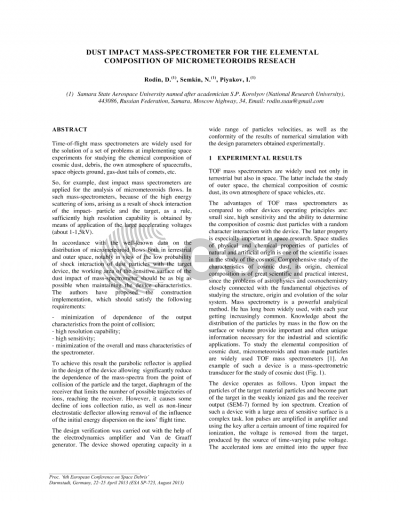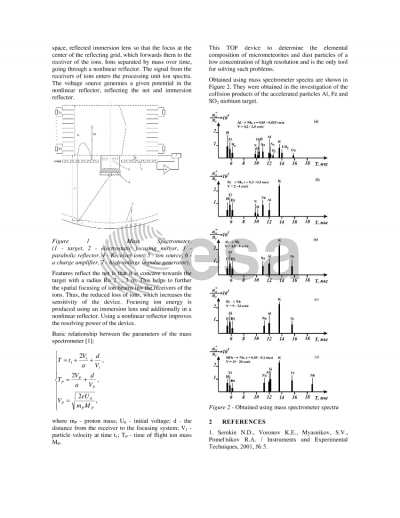Document details

Abstract
Time-of-flight mass spectrometers are widely used for the solution of a set of problems at implementing space experiments for studying the chemical composition of cosmic dust, debris, the own atmosphere of spacecrafts, space objects ground, gas-dust tails of comets, etc. So, for example, dust impact mass spectrometers are applied for the analysis of micrometeoroids flows. In such mass-spectrometers, because of the high energy scattering of ions, arising as a result of shock interaction of the impact- particle and the target, as a rule, sufficiently high resolution capability is obtained by means of application of the large accelerating voltages (about 1-1,5kV). In accordance with the well-known data on the distribution of micrometeoroid flows both in terrestrial and outer space, notably in view of the low probability of shock interaction of dust particles with the target device, the working area of the sensitive surface of the dust impact of mass-spectrometer should be as big as possible when maintaining the device characteristics. The authors have proposed the construction implementation, which should satisfy the following requirements: - minimization of dependence of the output characteristics from the point of collision; - high resolution capability; - high sensitivity; - minimization of the overall and mass characteristics of the spectrometer. To achieve this result the parabolic reflector is applied in the design of the device allowing significantly reduce the dependence of the mass-spectra from the point of collision of the particle and the target, diaphragm of the receiver that limits the number of possible trajectories of ions, reaching the receiver. However, it causes some decline of ions collection ratio, as well as non-linear electrostatic deflector allowing removal of the influence of the initial energy dispersion on the ions' flight time. The design verification was carried out with the help of the electrodynamics amplifier and Van de Graaff generator. The device showed operating capacity in a wide range of particles velocities, as well as the conformity of the results of numerical simulation with the design parameters obtained experimentally.
Preview



